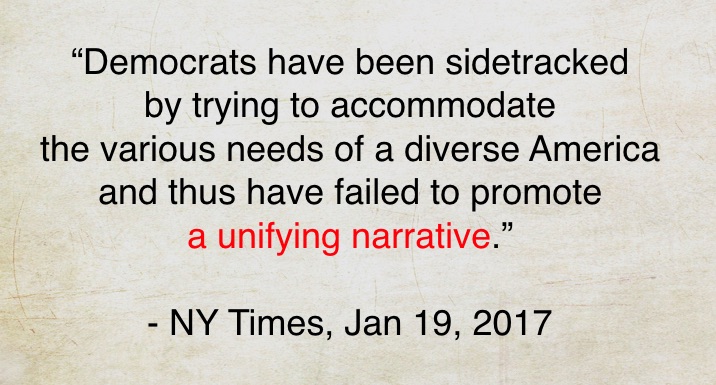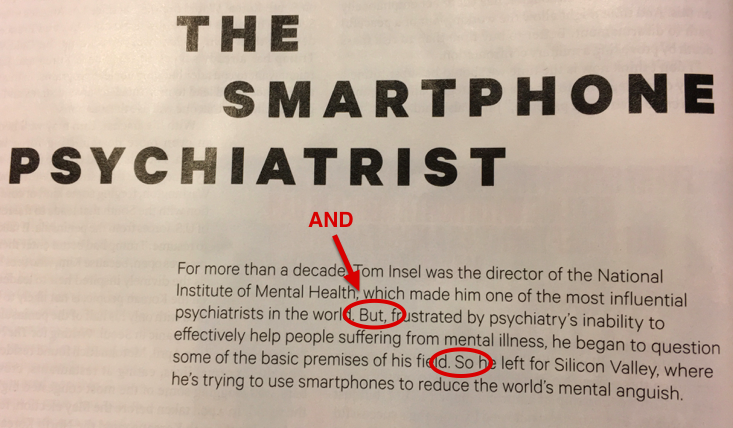Southerners tell stories, northerners are more informational/intellectual. Maybe. More than a billion tweets suggest this.
YOU MIGHT THINK EVERYONE TELLS STORIES, BUT … LOOKS LIKE THERE’S SOME REGIONAL VARIATION.
THE GREAT AMERICAN WORDMAPPER SHOWS AMERICA’S “BUT VS. AND” PATTERNS
One of the best payoffs from the presentation Jayde Lovell and I gave at SXSW Interactive was the vigorous discussions that popped up on Twitter. In the middle of one of them we got a big treat which you can see above.
Jack Grieve is a “forensic linguist” at Ashton University in the U.K. He joined our discussion and mentioned this amazing study he was part of. It’s called The Great American Word Mapper, where they analyzed over a billion tweets in the United States.
On Monday this week we had him connect through Skype to our Story Circles Narrative Training Demo Day with USGS folks in Minneapolis. He told us more detail about the study. It turns out every time you tweet, there are geographic coordinates recorded. That’s what they used to produce this amazing regional resource.
We were discussing my Narrative Index (BUT/AND x 100). He sent us the above plots for BUT versus AND. Which is incredibly fascinating. And exactly what I would predict.
SOUTHERNERS ARE STORYTELLERS
Long, long ago, when I was still a professor at UNH, I heard a talk from the Director of the Center for the Study of Southern Culture at the University of Mississippi. He made the case that the south is THE voice of American culture. He based this on a number of aspects, such as the only truly original art form the U.S. has given the world is jazz music, and the largest number of great novelists and playwrights have come from the south. He also pointed out there are no other centers for the study of culture for other parts of the country.
Having grown up in Kansas and spent plenty of time in the south, I definitely know that it is the greatest region for storytelling in the country. Which means I would expect it to be the region of the greatest ABT activity, and thus … exactly what you see — the greatest use of BUT in tweets.
There’s lots of other reasons for this pattern you could suggest. He felt it was strongly correlated to African American populations, but … look at Maryland — it has the 4th highest percentage of African American population. And look at New York versus Arkansas — they have the same percentage.
I think it’s a higher level function. I would argue the north/south difference in storytelling holds across all ethnicities. But then what do I know — I’m just making this ABT stuff up as we go along!





